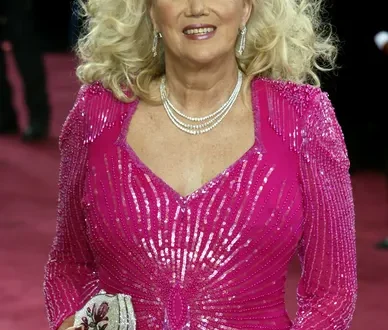Tilly Norwood, a wholly artificial intelligence–generated entity, has been thrust into the spotlight as her backers pursue traditional talent agency representation—drawing fierce backlash from Hollywood’s human performers. Though she lacks a pulse or lived experience, her creators pitch her as a new kind of digital star. The question dividing the entertainment world: is she a creative experiment or a serious threat?
Tilly was unveiled in 2025 by Xicoia, the AI arm of the production company Particle6, founded by Dutch actor-producer Eline Van der Velden. The launch was timed to coincide with a panel at the Zurich Film Festival’s industry summit, where Van der Velden disclosed that multiple talent agencies were privately expressing interest in representing Norwood in film and television projects. CBS News+2Reuters+2
Norwood already has credits—in a limited sense. She starred in a short, AI-generated sketch titled AI Commissioner, alongside other synthetic characters, with visuals and voice fully composed by AI tools. CBS News+3Reuters+3euronews+3 Her social media presence bolsters the illusion: a curated feed of modeling-style images, staged “behind the scenes” clips, and announcements of prospective roles. EW.com+3People.com+3euronews+3
But her emergence has provoked an outcry. The Screen Actors Guild-American Federation of Television and Radio Artists (SAG-AFTRA) issued a scathing statement declaring that Norwood “is not an actor” but “a character generated by a computer program trained on the work of countless professional performers without permission or compensation.” The union warned that her existence risks undercutting human artistry and undermining labor protections long fought for in the industry. Reuters+2EW.com+2
Led by strong comments from actors like Emily Blunt—who described the project as “terrifying”—the backlash extended across Hollywood’s ranks. Some performers have called for boycotts of firms that entertain AI clients; others criticized the notion that a synthetic entity could ever replicate the depth, messiness, and emotional weight of human experience. Diario AS+4The Guardian+4People.com+4
Critics argue that Norwood’s persona amounts to a kind of pastiche: her features and mannerisms drawn from aggregated data, stitched from imitation rather than originality. Her mouth movements, facial microexpressions, and voice intonation have already been singled out as occasionally slipping into uncanny territory. EW.com+5Wikipedia+5euronews+5 Some observers suggest that her public debut may itself be a provocative stunt—designed less to launch a new star than to spark debate on AI’s role in storytelling and entertainment. Diario AS+3The Guardian+3The Guardian+3
Van der Velden has defended her creation as a “piece of art, not a replacement for a human being,” comparing AI characters to animation, puppetry, or CGI—tools that expand creative possibility rather than erase artists. She argues that storytelling should be judged on narrative and emotional resonance, not whether the actor has flesh and blood. Deadline+5People.com+5EW.com+5 She also points to projected cost benefits: using Norwood (and similar tools) could reduce portions of production expenses by up to 90 percent, according to statements from Particle6. EW.com+3Wikipedia+3euronews+3
Yet the core of the controversy lies not in whether synthetic imagery can mimic reality—technology is advancing quickly—but whether the entertainment industry should legitimize and monetize an entity that gains leverage precisely because it bypasses human labor. If agents begin signing Tilly, the question arises: on whose behalf, with what rights, and whose voice is being represented? The Guardian+4CBS News+4Deadline+4
Others see the uproar as inevitable but not entirely negative: the drama around Norwood has sharpened focus on how industries regulate AI, consent, compensation, and the value of human creativity. Some studios quietly exploring synthetic production have paused or hedged pending clearer contracts and protections for performers. Wikipedia+7Reuters+7EW.com+7
No talent agency has publicly confirmed signing Norwood yet. Some have publicly declined. For now, she remains a net of optics and possibility—a digital figment chasing representation in a system built for flesh-and-blood actors. Whether she evolves into a legitimate asset or remains a provocation, her existence invites a reckoning: in the future of performance, what distinguishes a synthetic star from a human one—and who will decide the boundary?




